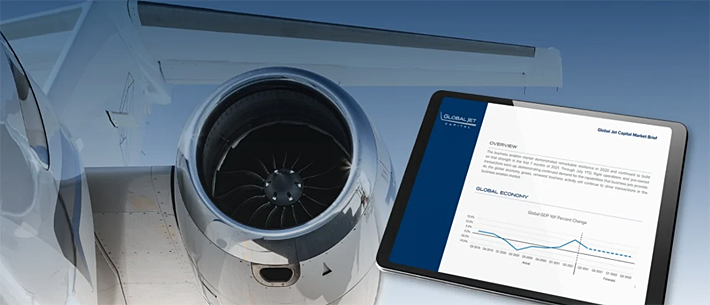INDIAN ARMED FORCES CHIEFS ON OUR RELENTLESS AND FOCUSED PUBLISHING EFFORTS

The insightful articles, inspiring narrations and analytical perspectives presented by the Editorial Team, establish an alluring connect with the reader. My compliments and best wishes to SP Guide Publications.

"Over the past 60 years, the growth of SP Guide Publications has mirrored the rising stature of Indian Navy. Its well-researched and informative magazines on Defence and Aerospace sector have served to shape an educated opinion of our military personnel, policy makers and the public alike. I wish SP's Publication team continued success, fair winds and following seas in all future endeavour!"

Since, its inception in 1964, SP Guide Publications has consistently demonstrated commitment to high-quality journalism in the aerospace and defence sectors, earning a well-deserved reputation as Asia's largest media house in this domain. I wish SP Guide Publications continued success in its pursuit of excellence.
- A leap in Indian aviation: Prime Minister Modi inaugurates Safran's Global MRO Hub in Hyderabad, Calls It a Milestone
- All about HAMMER Smart Precision Guided Weapon in India — “BEL-Safran Collaboration”
- India, Germany deepen defence ties as High Defence Committee charts ambitious plan
- True strategic autonomy will come only when our code is as indigenous as our hardware: Rajnath Singh
- EXCLUSIVE: Manish Kumar Jha speaks with Air Marshal Ashutosh Dixit, Chief of Integrated Defence Staff (CISC) at Headquarters, Integrated Defence Staff (IDS)
- Experts Speak: G20 Summit: A Sign of Global Fracture
In Q2 2025, flight activity, OEM backlogs, deliveries, and pre-owned transactions all rose year-over-year in the first half of 2025
Although uncertainty remains around future economic growth due to ongoing trade discussions, growth in Q2 2025 proved resilient and the outlook for steady growth going forward has improved. As such, the business aviation market is likely to be healthy through the remainder of the year. In Q2 2025:

Q2 2025 HIGHLIGHTS
- Flight operations increased 3.1 percent year-over-year, reflecting an enduring expansion in the user base for business aviation.
- OEM backlogs increased 8.4 percent year-over-year, as orders remain strong.
- While transactions slowed somewhat compared to a very robust Q1 2025, overall demand remained strong, and transactions were up year-over-year.
- Aircraft availability increased marginally quarter-over-quarter but declined from the previous year as a result of strong transaction volume.
- Most aircraft models experienced depreciation in line with historical norms. However, younger aircraft were more stable than older aircraft.
GLOBAL ECONOMY
The early part of Q2 2025 was marked by uncertainty following the White House's April 2 announcement of new tariffs on several major U.S. trading partners.ii Economists projected the large increase in tariff rates could increase inflation and slow economic growth.iii Meanwhile, fears among consumers and businesses triggered a sharp market decline, with the S&P 500 falling 12.1 percent in the seven days following the announcement.iv
Despite the initial volatility, the economy stabilized over the course of the quarter and demonstrated continued resilience. Markets rebounded after the White House announced a 90-day pause on reciprocal tariffs,v with the S&P 500 rising 9.5 percent.vi Broader economic indicators remained strong: China's GDP grew 5.2 percent, exceeding expectations, while U.S. retail sales and industrial production also showed solid performance.vii
Looking ahead, the economic outlook remains fluid with some tariffs having already taken effect. However, negotiations between the U.S. and its trading partners are showing progress, highlighted by recent agreements between the U.S. and major trading partners.viii These deals, combined with better-than-expected global growth in Q2 2025, suggest that overall economic growth should remain steady over the remainder of 2025.
FLIGHT OPERATIONS
In Q2 2025, flight operations increased by 3.1 percent year over year, driven primarily by growth in North America. In the U.S., strong demand that began during the fall 2024 travel season and continued through the winter holidays carried into 2025. Although geopolitical tensions in other regions slowed growth, flight activity outside the U.S. still performed well, rising 2.3 percent in Q2 2025 compared to the same period in 2024. Fractional operators remained the leading market segment, showing strong growth throughout the quarter.
Departures in Q2 2025 rose 8.4 percent from Q1 2025, reflecting typical seasonal patterns. For comparison, quarter-over-quarter increases were 7.7 percent in Q2 2024 and 6.8 percent in Q2 2023, highlighting sustained and growing demand for business aviation in 2025.
This strong year-to-date performance underscores the continued expansion of the business aviation user base over the past five years. Thanks to the industry's core value proposition — providing personal safety, flexibility, productivity, and comfort – flight operations are expected to remain resilient despite ongoing economic uncertainty.
OEM BACKLOGS
OEM backlogs rose 8.4 percent year-over-year in Q2 2025, reaching $55.5 billion. Manufacturers continued efforts to resolve supply chain and labor constraints, resulting in a year-over-year increase in deliveries. Total orders grew versus the same period in 2024 as demand for business jets remained healthy. Excluding a non-recurring fleet order of 50 aircraft, we estimate there was an industry book-to-bill ratio of ~1-to-1 at the end of Q2. Lead time among the major manufacturers remained between 18 to 24 months, enabling OEM's to sustain the current levels of deliveries while maintaining a healthy backlog.
TRANSACTIONS ($ VOLUME)
Note that Q2 2025 figures reflect preliminary data and may increase as more transactions are reported to data providers.
After stabilizing in 2024, transactions increased in the first half of 2025. Year over year, total unit volume in H1 2025 rose by 9.1 percent, while total dollar volume grew by 11.2 percent. In recent years, new aircraft deliveries have been constrained by supply chain disruptions, labor shortages, and delays in aircraft certification. However, OEMs have made progress in addressing these challenges, resulting in an 11 percent increase in new delivery dollar volume in H1 2025. Most OEMs continue to publicly maintain their plans to moderately increase production levels in 2025, largely representing a reversion to normalized delivery levels.
With momentum from strong levels of activity in Q4 2024 carrying over into 2025, pre-owned transaction unit and dollar volumes also posted year-over-year growth in the first half of the year. Although activity moderated from the exceptionally high levels seen in Q1 2025, strong demand drove an 11.4 percent increase in dollar volume during the first half of the year. The solid performance in H1 2025 positions the market well, and the introduction of bonus depreciation is expected to drive additional demand in the second half of the year.
FOR SALE INVENTORY
In the first half of 2025, aircraft listings declined by 9.2 percent compared to the same period in 2024. The 12.3 percent year-over-year drop in Q2 2025 marked the third consecutive quarter of year-over-year declines in new listings.
In 2021, strong demand led to many transactions involving unlisted aircraft, which pushed public listings 25.3 percent below 2019 levels. However, from early 2022 through mid-2024, sellers returned to publicly listing their aircraft, aligning with historical norms and driving an increase in new listings.
As the market stabilized in late 2024 and into 2025, listings began to decline again and are now roughly in line with pre-COVID levels. However, the composition of new listings has shifted since 2019. In the first half of 2019, aircraft aged 13 years or older made-up 60.2 percent of listings; by H1 2025, that share had risen to 71.3 percent. Meanwhile, listings for aircraft aged 12 years or younger fell by 28.3 percent over the same period and now represent just 28.7 percent of total listings.
In Q2 2025, aircraft availability remained stable, increasing from 7.2 percent of the total fleet in Q1 2025 to 7.3 percent. This number is down from 7.7 percent in Q2 2024. Availability remained below the approximately 10 percent average observed over the last decade, driven by declining listings and strong activity in the pre-owned market in late 2024 and the first half of 2025. This stability follows a period of increasing availability as more aircraft became publicly available throughout 2023 and 2024.
The market experienced a split between younger and older aircraft in Q2 2025. Availability of aircraft 12 years and younger declined from 4.9 percent of the fleet in Q1 2025 to 4.8 percent of the fleet, continuing a trend that began in Q3 2024 when availability stood at 5.6 percent. On the other hand, availability of aircraft aged 13 years and older increased from 8.4 percent of the fleet in Q1 2025 to 8.6 percent, reversing a downward trend that began in Q3 2024 when 9 percent of the fleet was available for sale.
Overall, the relationship between supply and demand is expected to remain in balance, with listings in decline and availability below historical averages.
RESIDUAL VALUE
The above chart compares the year-over-year percentage change in the bluebook value of like-aged aircraft over time (e.g., the difference between the value of an eight-year-old aircraft from one year to the next). Global Jet Capital analyzes a basket of aircraft as a proxy for the overall market. Values vary on a model-by-model basis and observed increases or decreases in value are not necessarily applicable to any specific aircraft make/model. For the value of a specific aircraft, please contact a licensed aircraft appraiser.
Aircraft bluebook values were stable in Q2 2025, with the value of like-aged aircraft declining 0.5 percent from Q2 2024, continuing a trend that began in Q4 2023. Between Q1 2025 and Q2 2025, aircraft values declined 1.4 percent, broadly in line with historical trends.
This recent period of stability follows significant increases in aircraft values between 2021 and 2023, driven by strong demand for business jets. Limited availability during that time pushed values higher. By 2023, availability began to normalize, reaching a near-term peak of 7.8 percent in Q3 2024 before easing to 7.3 percent in Q2 2025. This increase from post-pandemic lows helped restore balance between buyers and sellers, contributing to price stability.
Despite the overall stability of values, variations emerged across the installed fleet in Q2 2025. As previously noted, the increase in availability was concentrated in the older aircraft segment. As a result, values for aircraft aged 13 years and older declined by 3 percent during the quarter, while values for aircraft aged 12 years and younger held steady, rising by just 0.6 percent.
It is worth noting that business jets are depreciating assets and a steady decline in the price of an aircraft over its lifespan is to be expected. The current consensus among industry players is that supply and demand are well-balanced and should support stable aircraft values in the near future, economic uncertainty notwithstanding.





